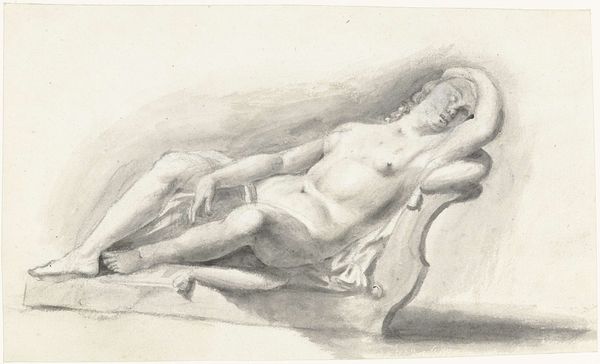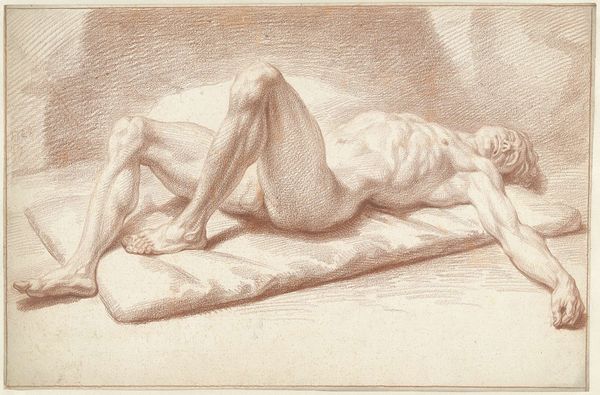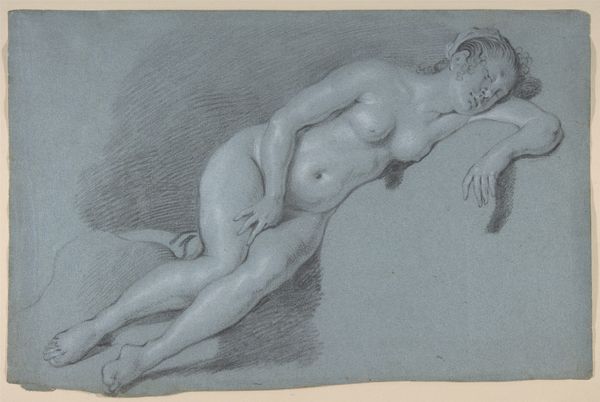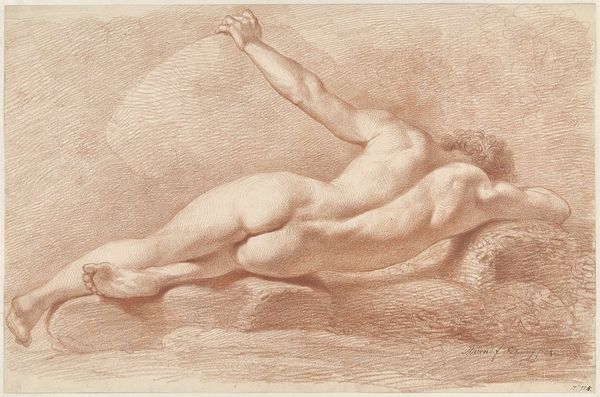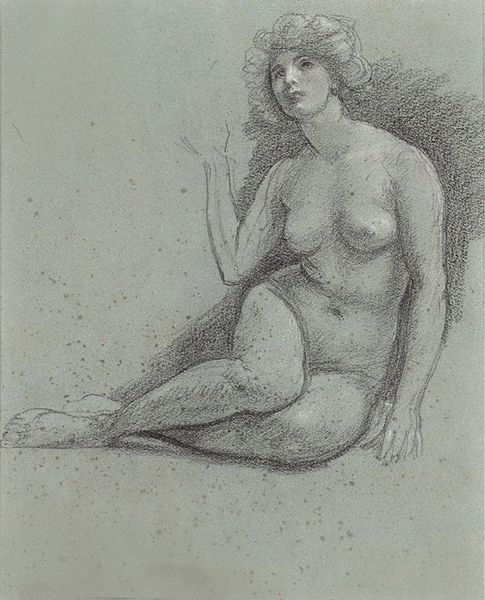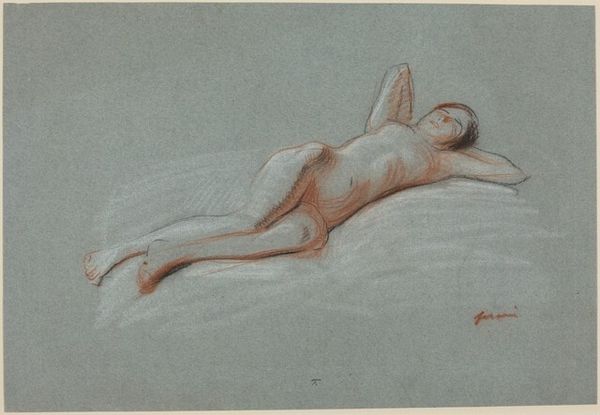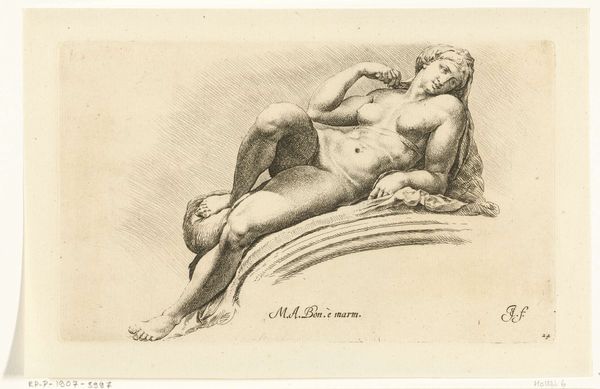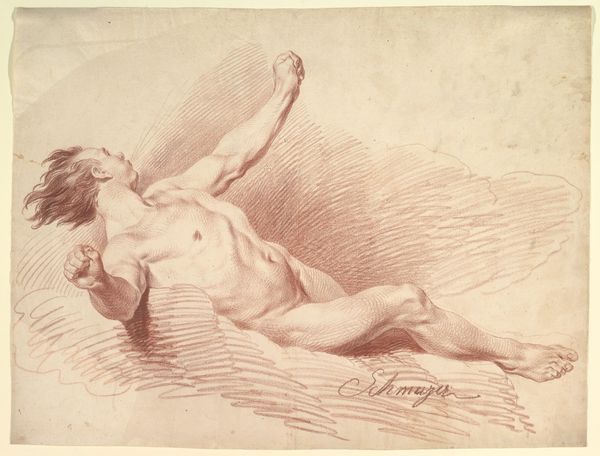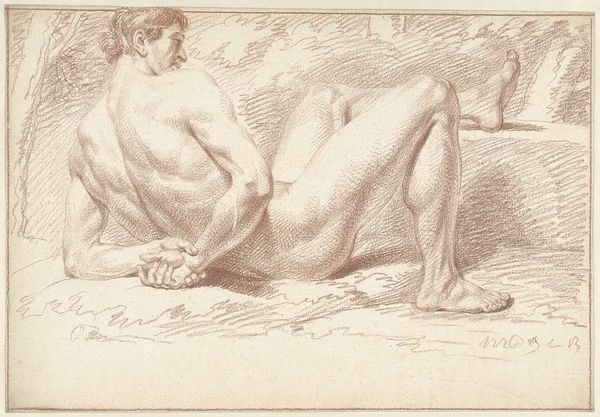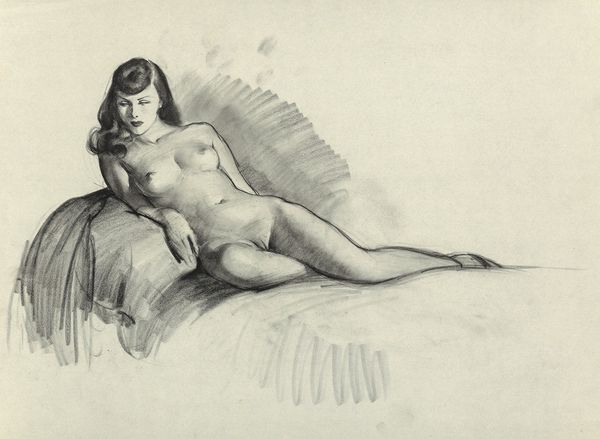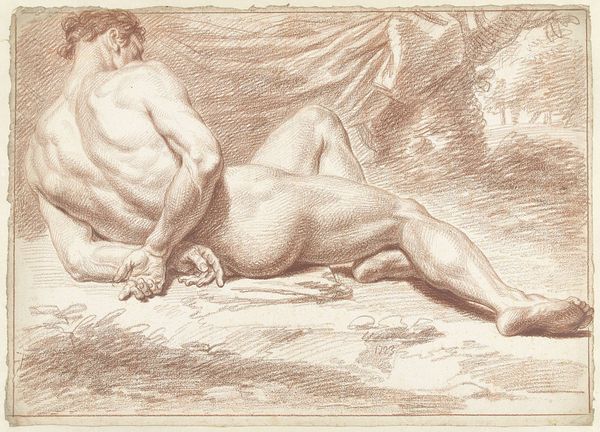
drawing, paper, pencil
#
portrait
#
drawing
#
facial expression drawing
#
pencil sketch
#
figuration
#
paper
#
portrait reference
#
pencil drawing
#
pencil
#
animal drawing portrait
#
portrait drawing
#
facial study
#
facial portrait
#
academic-art
#
nude
#
portrait art
#
fine art portrait
Dimensions: height 204 mm, width 236 mm
Copyright: Rijks Museum: Open Domain
Curator: It's fascinating how peaceful she looks. This pencil drawing, "Reclining Female Nude," by Jan Lodewijk Jonxis, composed sometime between 1799 and 1867, really captures a moment of utter repose. Doesn’t it just emanate serenity? Editor: It does. Though "serenity" reads, to me, a bit too close to complicity with the male gaze if we're not also examining the ways that a reclining nude is often loaded with social power dynamics. Who gets to relax and who is on display, and for whom? Curator: That's a fair point. Looking closer, the simplicity of the lines—the almost dreamlike haziness achieved with just pencil on paper—draws me into a quieter consideration, detached from the sometimes loud debates about the nude. There is softness here. It's an intimate perspective, but is it necessarily an objectifying one? Editor: It's walking a fine line, isn’t it? Think about academic art traditions from the time this was made. There's an undeniable influence of idealized beauty standards, yet, even through the rendering, one can read hints of an individual, especially when thinking about the female form being depicted here for predominantly male viewers in that historical period. Where's her story beyond simply being "beautiful?" Curator: Maybe the beauty, and our interpretation of it, can be a bridge, or an entryway. The lines are so delicately rendered… It feels almost as if the artist tiptoed around the page, scarcely breathing lest he disturb the woman's sleep. Perhaps it's an exercise in skill and appreciation without intending a specific narrative. Editor: Or, alternatively, it reflects the restrictions placed on female agency. Nudity was permissible on these terms, offering a limited lens for expressing individuality. We could further think about if that is challenged here, however subtly? Curator: It prompts more questions than answers, definitely. What can we really know of this woman's experiences or Jonxis’ intent? Perhaps art can be a visual invitation into pondering those questions themselves, beyond settling on any fixed conclusions. Editor: Absolutely. Thinking of that, engaging with art becomes a critical exercise. Jonxis offers a quiet image but a lot to reflect on.
Comments
No comments
Be the first to comment and join the conversation on the ultimate creative platform.
